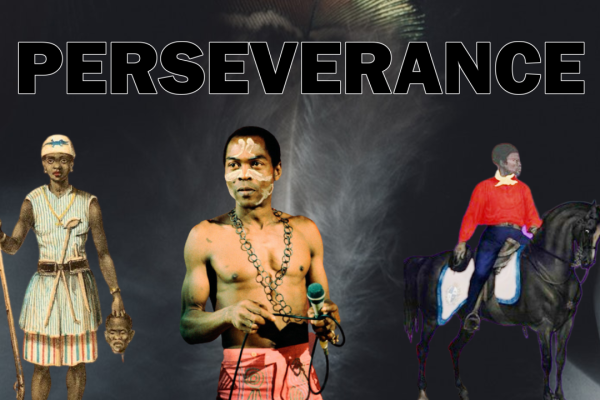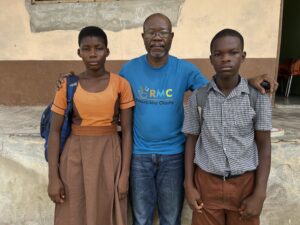PERSEVERANCE
Training perseverance is the art that enables us to face any challenge. Thanks to this psychological strength, we achieve our goals, face adversity and make resilience our hallmark so that we never give up. Perhaps training perseverance will not allow us to achieve the desired happiness, but it will certainly help us achieve something more powerful: pride in ourselves. It leads us to be, for example, the kind of person who can face challenges, who works at his or her destiny, who knows no surrender and gets up after every fall. Laozi said that perseverance is the basis of all actions. However, let’s face it, no one teaches us how to weave this skill or how to develop the personality base that helps us achieve our highest goals. We generally acquire it from our closest environment: from those parents who inspire us, from the figures we admire for their attitude and approach to life. How wonderful it would be if we could be born with this competence, written in our genetic code! Recent studies suggest to us that perseverance acts as a powerful exercise in psychological resilience. It is more than a tool to help achieve goals. It is a dimension linked to less depression and a very effective strategy against anxiety. In this article I will present some important figures who have focused their lives on pursuing their goals, respect their values with strength, cunning and perseverance.
AMAZONS
Trained to be ruthless killers, the Amazons of Dahomey struck fear into the hearts of 19th-century colonists. And although they were eventually defeated, some survivors still got their revenge. When the French colonizers tried to conquer the West African Kingdom of Dahomey in the late 19th century, they met fierce resistance from the Dahomey Amazons, a team of thousands of fearless warrior women. Although they were strategically married to their king, the Dahomey Amazons devoted their lives to battle and vowed never to have children. Among them were riflemen and “reapers” who carried blades that could cut an enemy in half. According to a French soldier, the Dahomey Amazons were warriors who “fought with extreme valor, always ahead of other troops” and were “extraordinarily brave … well trained for combat and very disciplined.” It is extremely difficult to find information about the daring young warrior who led the Dahomey Amazon to war against the French and the Egba fortress of Abeokuta. Seh-Dong-Hong-Beh is believed to have been born in 1835 at a time when the Dahomey Amazons were well established in Dahomey. Among the locals, the army of women warriors was known as the minosse which translates as our mothers, a name given to them by the all-male army of Dahomey.
ANDREA AGUYAR
Garibaldi is to everyone “the hero of two worlds.” It is from school desks that we learn of his involvement in the internal struggles of Brazil and Uruguay in the first half of the 19th century. Of the efforts to defend the Roman Republic of Andrea il Moro, Garibaldi’s African-born lieutenant, however, not many in Italy remember. Born in Montevideo, his real name was Andrés Aguyar (or Aguiar) and he was descended from a family of slaves deported from Africa. He himself remained as such, a slave, until slavery was abolished in Uruguay on December 12, 1842. The decision was also made so that the opposing parties in the Civil War could reinforce their ranks with new soldiers. Garibaldi, who participated in support of the liberal Colorados faction, as opposed to the conservative Blancos faction, was able to appreciate Aguyar’s valor and when he returned to his homeland in 1848 he found him at his side, unlike some of his other men who decided to remain in the New World. Following the European uprisings of 1848, on February 9, 1849, the Roman Republic was proclaimed in the territories of the Papal States. The experience was short-lived, only five months, until July 1849. Crucial to its capitulation was the French military intervention of Louis Napoleon Bonaparte, who for political expediency re-established the Papal order. However, in those months Rome experienced a great political and civil awakening. Universal suffrage was introduced, the death penalty was repealed, and freedom of religion was recognized: achievements that would not become a reality in Europe until a century later.
CREOLITE
Créolité can perhaps best be described in contrast to the movement that preceded it, négritude, a literary movement led by Aimé Césaire, Léopold Sédar Senghor, and Léon Damas in 1930. Négritude writers sought to define themselves in terms of their cultural, racial and historical ties to the African continent as a rejection of French colonial political hegemony and France’s cultural, intellectual, racial and moral domination. Césaire and his contemporaries viewed the shared black heritage of members of the African diaspora as a source of power and self-worth for those oppressed by the physical and psychological violence of the colonial project. In Lewis’s words, it is a “transitional,” “agent of revolutionary change” movement spurred by a desire to express a black singularity and black unity. Later writers such as Martinican Edouard Glissant came to reject the monolithic vision of “Negro-ness” portrayed in the négritude movement. Indeed, an initial naming of this movement after négritude as créolitude in 1977 gave way to créolité, with a suffix change indicating a “strong semantic contrast.” Acting as a backdrop to créolité, in the early 1960s, Glissant advanced the concept of Antillanité (“Caribbeanity”), which argued that Caribbean identity could not be described only in terms of African descent. Caribbean identity came not only from the legacy of former slaves, but was equally influenced by indigenous Caribbean people, European colonialists, East Indies, and Chinese (indentured servants).
MARIO BATTALION
Another example of perseverance is Mario Battalion. The ” I Battaglione Mario”: a partisan formation active in the Marche region during the Resistance that became an “international” force, made up of former Allied prisoners, Slavs and Jews. But not only: its ranks also included Africans, Eritreans and Ethiopians, protagonists of an odyssey that began even before the war. A story that Professor Isabella Insolvibile and Paolo Mieli reconstruct in this episode of “Past and Present,” which also hosts historian Matteo Petracci, an expert on the history of the “Mario Battalion.” It all begins on May 9, 1936, when Mussolini announced the birth of the Empire. In Fascist circles, intoxicated by the victory, the idea of holding a Triennial Exhibition of Overseas Lands in Naples, to exhibit Italian supremacy in the territories of the Horn of Africa, comes to the fore. Areas and exhibition pavilions will be dedicated to Albania, the Dodecanese, Libya and East Africa. Seventy colonial subjects, including Eritreans and Ethiopians, are also hired to be exhibited in an indigenous village, reconstructed for the occasion. The Exhibition opens on May 9, 1940, on the occasion of the Empire’s fourth annual anniversary, but, a few weeks later, Italy enters the war. The British interdicted passage through the Suez Canal and the small African community was stranded in Italy. Having become a burden to those in charge of the Triennale, the community is relocated to Villa la Quiete, a former fascist prison camp in the province of Macerata. On Oct. 28, 1943, the “Mario Battalion” – commanded by Mario Depangher – stormed the Villa to retrieve weapons and open the camp gates. About ten former colonial subjects decided on that occasion to join the partisan formation to go and fight, together, the Nazi-Fascists.
FELA KUTI
Onother example of perseverance is Fela Kuti. Beginning in 1960, Fela Kuti pioneered his unique style of music called “Afrobeat.” Rebellion against oppressive regimes through his music came at a heavy cost. Kuti was arrested 200 times and suffered numerous beatings, but he continued to write political lyrics, producing 50 albums before he died on August 2, 1997, in Lagos, Nigeria. Musician and political activist Fela Kuti was born Olufela Olusegun Oludotun Ransome-Kuti on October 15, 1938, in Abeokuta, Nigeria. Kuti was the son of a Protestant minister, Rev. Ransome-Kuti. His mother, Funmilayo, was a political activist. As a child, Kuti learned piano and drums and directed his school’s choir. In 1950, Kuti told his parents that he was moving to London, England, to study medicine, but ended up attending Trinity College of Music instead. While at Trinity, Kuti studied classical music and developed an awareness of American jazz. In 1963, Kuti formed a band called Koola Lobitos. Later, he changed the band’s name to Afrika 70, and again to Egypt 80. Starting in 1960, Kuti pioneered and popularized his unique style of music called “Afrobeat.” Afrobeat is a combination of funk, jazz, salsa, Calypso, and traditional Nigerian Yoruba music. In addition to their distinctive mixed style, Kuti’s songs were considered unique from more commercially popular songs because of their length, which ranged from 15 minutes to an hour. Kuti sang in a combination of Pidgin English and Yoruba. In the 1970s and 1980s, Kuti’s rebellious song lyrics established him as a political dissident. As a result, Afrobeat became associated with political, social, and cultural statements about greed and corruption. One of Kuti’s songs, “Zombie,” questions the blind obedience of Nigerian soldiers to the execution of orders. Another, “V.I.P. (Vagabonds in Power),” seeks to empower the disenfranchised masses to rise up against the government.







